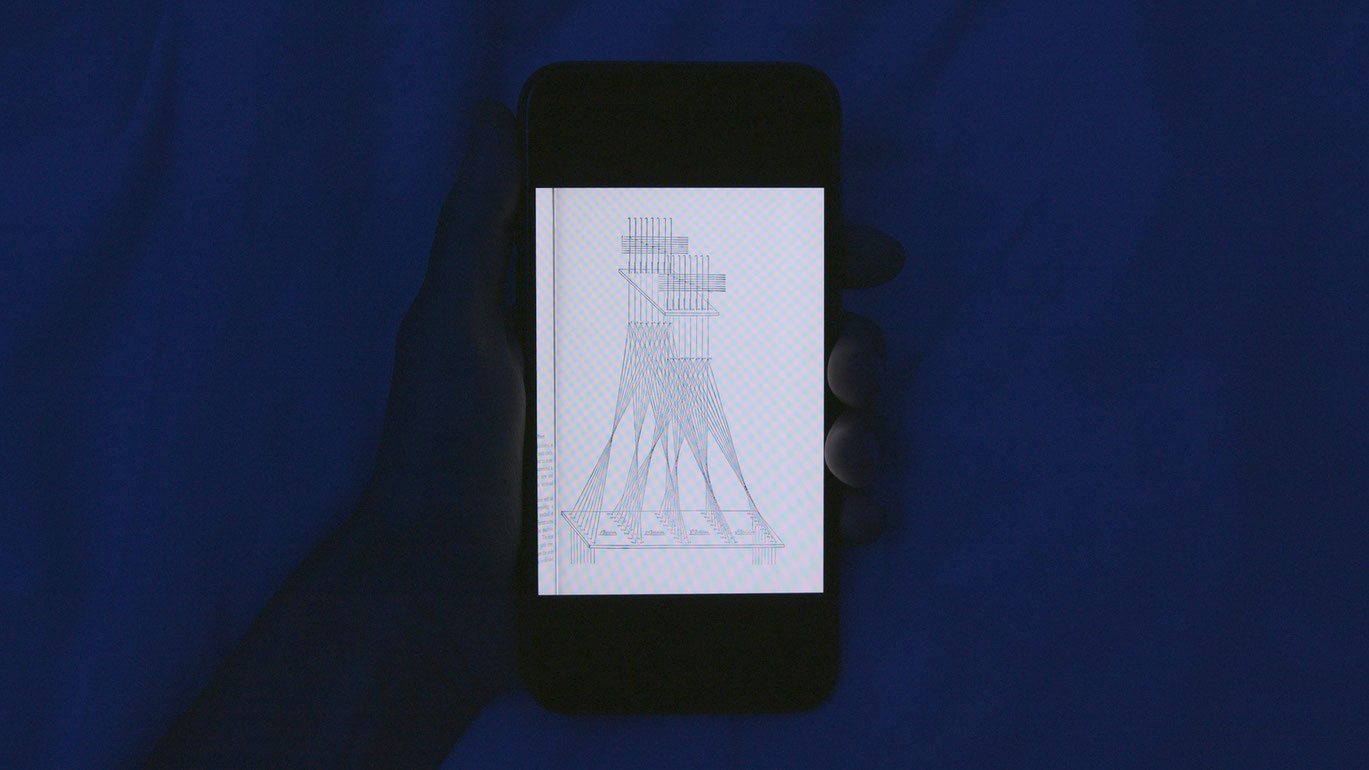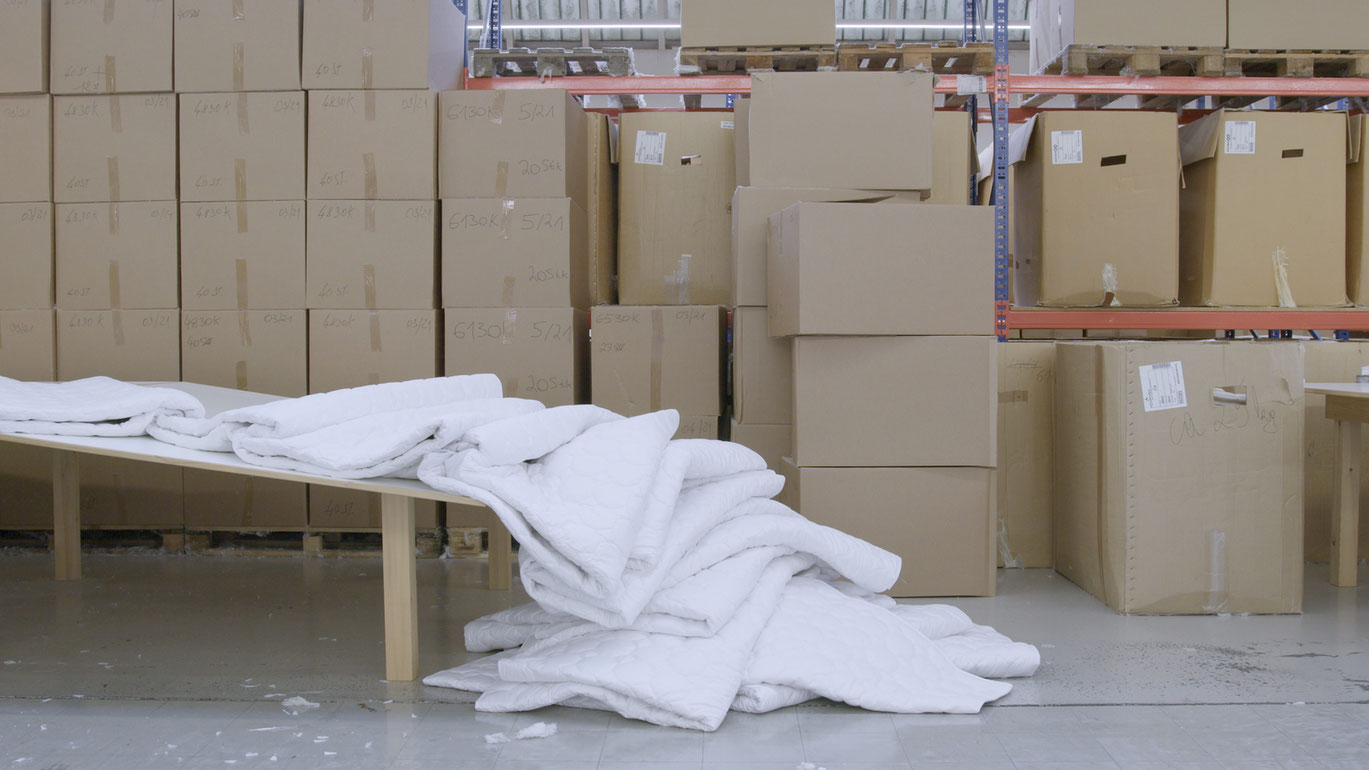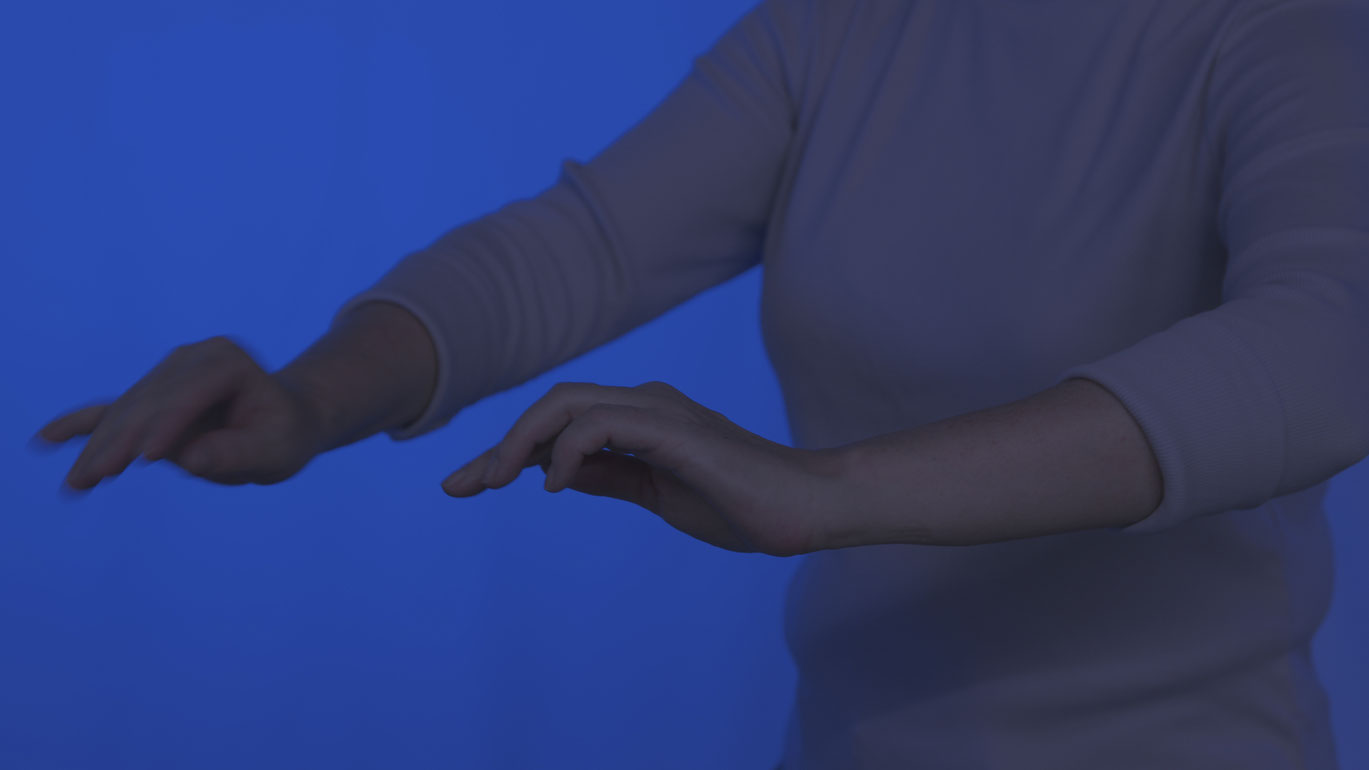Patterns Against Workers
In a darkened room at night, the camera is aimed at the screen of a smartphone. A hand swipes and scrolls, corresponding to the vertical and horizontal relationships textile fabric, through stored and digitally accessible images and video sequences that accompany the spoken text. In the same way that the camera scans the surface of a duvet cover with its optical eye in a dim room, it records the body parts of workers in the electric light of a bedding factory. Meter by meter, they feed textile material to the sewing machine in the same, fixed movements. Just as the film’s timewise progression is counted by a clock, production in the factories runs day and night....
The film essay reflects the radical change from the development of the structures (patterns) of hand-woven textiles to industrial textile production, which is based on computer-controlled organizational structures (patterns) and follows the logic of mass production. While the hand-woven fabrics and fabric patterns of the Bauhaus weavers were still the result of joint experiments with material, color, and weave in order to develop lively haptic and optic effects, and while the hand loom was the weaver’s instrument, the introduction of programmable looms then made any textile pattern weavable, calculable, and retrievable in the shortest possible time.
The orchestrated beat of the machines, whose vibration, rhythm and noise imprint themselves on the body, haunts the workers themselves as they fall into sleep. The numerical thinking that underlies the construction of a textile was adopted to develop computers, which are now used to calculate, monitor, and optimize production processes. A network of factories and information flows covers the surface of the earth.
PATTERNS AGAINST WORKERS interweaves textual and visual levels, reflecting on itself as a medium by focusing on the haptic aspect (as a main feature of the textile) and on the touch of hands with surfaces, well aware that its technical optics and digital recording technology itself originates in the development of information technology. (Ulla Rossek)
Translation: John Wojtowicz
Preis der Stadt Duisburg / Filmwoche 2023 - Jury Begründung (Award)
Duisbuger Filmwoche 2023
Preis der Stadt Duisburg für kurzen und Mittellangen Dokumentarfilm
Arbeiterinnen, die auf die Sekunde genau wissen, wie lange sie auf ihren ergonomisch eingerichteten Arbeitsplätzen zum Nähen einer Decke brauchen. Ein bloß von Händen repräsentierter Körper, der sich auf einer solchen Decke mittels schwarzem Bildschirm in den insomnischen Zwischenraum träumt. Hier werden von der linearen Zeit losgelöste visuelle und gedankliche Verknüpfungen zwischen präkeramischer Vorgeschichte, den Erfindungen von Webstuhl, Computerschaltplatte, ausbeuterischer Landschaftsnutzung und dem Aufbau einer Fabrik gezogen, die auch einem mit Schmerztabletten gefüllten Verkaufsautomaten ein Stück des knapp bemessenen Platzes zugesteht.
Mit konterintuitiven filmischen Techniken und einer Voice-over Stimme irgendwo zwischen Meditationsanleitung und Innerem Monolog einer Schlaflosen, führt uns Olena Newkryta mit „Patterns Against Workers“ auf eine Ebene, in der Zusammenhänge verständlich gemacht werden, die in einer klassischen, auf Akkumulation basierenden Wissensvermittlung kaum erreichbar wären. Auf diese Weise erschließt sich etwa der direkte Weg von den maschinell lesbaren Webmustern des Textilkapitalismus im 19. Jahrhundert zu den unterdrückenden, lebensfeindlichen aber größ tenteils unbewussten Anweisungsmustern der Gegenwart. Dem Umstand, dass dieser Weg natürlich nicht geradeaus verlaufen kann, trägt der Film durch meditative, assoziative und auch haptische Vorgehensweisen Rechnung, welche die Filmerfahrung zu einer intellektuellen wie auch dezidiert körperlichen Erfahrung machen. Ungewohnt, teilweise unheimlich aber nie unangenehm.
Wenn all dies paradox klingt, dann weil sich gewisse Muster nur auf eine Weise erkennen lassen, die genau diese Muster durchbricht. Der Filmessay verbindet die gänzlich unterschiedlichen Texturen von Handybildschirmen und gewebten Produkten auf eine taktil beinahe spürbare Weise. Dass sich all dies auf einem weiteren, ursprünglich mal gewebten Oberfläche, nämlich der Kinoleinwand abspielt, ist auf poetische Weise folgerichtig.
In einer gleichzeitig beunruhigenden und optimistischen Coda zeigt die Filmemacherin einerseits, wie sich die immer effizienteren Codes oder Patterns der Industrie längst in unsere Körper eingeschrieben haben, aber auch, dass diese Körper immer noch fähig sind, diese Codes auf eine unproduktive aber gewinnbringende Weise umzudeuten und zu etwas Schönem zu formen. Die Geschichte ist noch nicht zu Ende.
Jury: Özge Inan, Lukas Marxt, Dominic Schmid
Patterns Against Workers
2023
Austria
34 min
Experimental, Documentary
English
English, German



